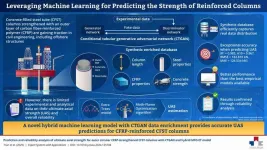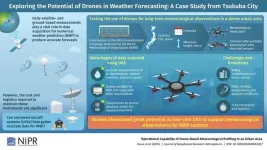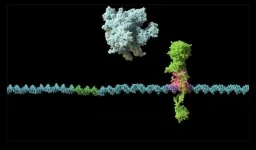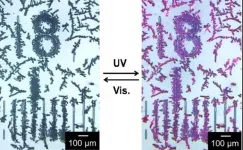(Press-News.org)
In the quest for stronger, more resilient buildings and infrastructure, engineers are turning to innovative solutions, such as concrete-filled steel tube columns (CFST) strengthened with carbon fiber-reinforced polymer (CFRP). These advanced composite structures combine the robust load-bearing capabilities and strength of CFST columns with the lightweight, corrosion-resistant properties of CFRP. The result is a cutting-edge construction material that not only enhances structural performance but also offers increased durability and reduced maintenance.
Given the potential of CFRP-strengthened CFST columns in modern construction projects, researchers have been running extensive experimental campaigns and developing models that can predict their properties. However, available data on these columns are limited, leading to questionable prediction performance even when using the best machine learning-powered models.
Fortunately, a research team led by Associate Professor Jin-Kook Kim of Seoul National University of Science and Technology set out to find a solution to this hurdle. In their latest paper, published in Expert Systems with Applications, the team presented and verified a novel hybrid machine learning model capable of accurately predicting the ultimate axial strength of CFRP-strengthened CFST columns—a critical structural parameter in construction projects. This study was made available online on November 13, 2024, and will be published in Volume 263 of the journal on March 5, 2025.
To overcome the scarce availability of data on CFRP-strengthened CFST columns, the researchers employed a form of generative AI to create a synthetic database. “We employed a conditional tabular generative adversarial network, or ‘CTGAN,’ to generate new data with similar characteristics to real data,” explains Dr. Kim. Then, they used this database to train and validate a hybrid machine learning model combining the Extra Trees (ET) technique and the Moth-Flame Optimization (MFO) algorithm.
Through rigorous testing, the researchers evaluated the performance of the proposed model. “Compared to existing empirical models in the literature, the predictive and reliable performances of the MFO-ET model are outstanding,” highlights Dr. Kim. The hybrid model exhibited better accuracy than even the best alternatives available, achieving lower error rates across several key metrics. The results were further solidified via a reliability analysis, which indicated that the model can consistently deliver accurate predictions under various conditions.
Using the proposed model, engineers will be able to create safer and more efficient designs using CFRP-strengthened CFST columns, which are useful in skyscrapers, high-rise constructions, and offshore structures alike. Moreover, it could help make necessary predictions for strengthening older buildings or bridges by retrofitting them with CFRP materials. Notably, CFRP-strengthened CFST columns are resilient against corrosion and other natural processes, which is important in the face of climate change and more frequent extreme weather events.
To make the proposed model more easily accessible and widely applicable, the research team also created a web browser-based tool that can be used to make ultimate axial strength predictions in CFRP-strengthened CFST columns for free. It can be accessed from any device and without installing any software locally.
Overall, the proposed model represents a valuable tool for improving the design and assessment of CFRP-strengthened CFST columns. By providing reliable strength predictions, it will help engineers optimize construction processes and enhance the safety of both new and existing structures at a lower cost.
***
Reference
DOI: 10.1016/j.eswa.2024.125704
About the institute Seoul National University of Science and Technology (SEOULTECH)
Seoul National University of Science and Technology, commonly known as 'SEOULTECH,' is a national university located in Nowon-gu, Seoul, South Korea. Founded in April 1910, around the time of the establishment of the Republic of Korea, SEOULTECH has grown into a large and comprehensive university with a campus size of 504,922 m2. It comprises 10 undergraduate schools, 35 departments, 6 graduate schools, and has an enrollment of approximately 14,595 students. Website: https://en.seoultech.ac.kr/
About the author
Jin-Kook Kim is an Associate Professor at the Civil Engineering Dept. of Seoul National University of Science and Technology (SeoulTech). His research focuses on FEM simulations considering strain history, ultra-high-strength post-tensioning systems, and AI-based smart structural safety analysis. Before joining SeoulTech, he was a Senior Researcher at POSCO, specializing in structural research and high-strength cables for bridges. He earned his Ph.D. in Civil Engineering from KAIST in 2006. Professor Kim has authored several publications and received awards for his contributions, including the POSCO Family Technology Award. At SeoulTech, he teaches Structural Analysis, Protective Design, and Optimal Design.
END
Climate change is making extreme weather events worse, empowering meteorological phenomena such as storms, hurricanes, heatwaves, and droughts. Against this backdrop, numerical weather predictions (NWPs), which use complex mathematical models that simulate atmospheric conditions, have become critical to protect people and businesses from these events and other weather-borne disasters.
Unsurprisingly, NWP models need a massive amount of daily data to make accurate predictions. While some of this data comes from satellite images and ground-based stations, a fine atmospheric vertical structure ...
Silicon (Si) is one of the most abundant elements on Earth, found in large quantities in soil. While Si is not essential for land plants, many plants, such as rice and grasses, have used Si to develop powerful defense mechanisms against various environmental stresses. Si accumulates in plant leaves and aerial organs as amorphous silica (SiO2), which offers protection against pathogens, herbivores, and environmental challenges like drought. Understanding the processes through which plants manage this beneficial element could enhance crop resilience and productivity, especially in the face of climate change.
In a breakthrough study, ...
An international collaboration has achieved an important breakthrough in understanding the genetic mechanisms that allow bacteria to build resistance to drugs.
Bacteria have multiple defence mechanisms they can use to build resistance to antibiotics, one of the major problems facing public health globally.
One of these mechanisms involves plasmids, small DNA molecules in bacterial cells, which have their own independent genome and carry antibiotic resistance.
If we can work out the roles plasmids play inside bacteria, then we can use the information to develop a new generation of therapeutics that can target drug resistant infections.
John ...
Proteins are life’s engines, powering processes like muscle movement, vision, and chemical reactions. Their environments—water, lipid membranes, or other condensed phases—are critical to their function, shaping their structure and interactions.
Yet many modern protein-design methods, including AI-based tools, often ignore how these surroundings influence proteins. This gap limits our ability to create proteins with new functions, slowing progress in medicine and bioengineering.
One group of proteins working in such specialized ...
Bethesda, MD (Jan. 22, 2025) — The American Gastroenterological Association (AGA) has unveiled an updated clinical practice guideline in Gastroenterology addressing the prevention and management of hepatitis B virus reactivation (HBVr) in patients on immunosuppressive drugs. The use of immunosuppressive drugs has increased significantly since 2013, according to data gathered via the National Health Interview Survey.
New tailored risk assessments can help health care providers and patients navigate challenges posed by the newer immunosuppressive therapies used for oncology, rheumatology, and gastrointestinal diseases. As the ...
Adults who have been diagnosed with attention deficit hyperactivity disorder (ADHD) may be living shorter lives than they should, finds a world-first study led by UCL researchers.
The research, published in The British Journal of Psychiatry, analysed anonymised primary care data from 30,029 adults across the UK with diagnosed ADHD.
They then compared this group with 300,390 participants without ADHD, who were matched by age, sex, and primary care practice.
The researchers found an apparent reduction in life expectancy for men with diagnosed ADHD of between 4.5 and 9 years, and between 6.5 and 11 years for women.
Senior author, ...
The fossilised neck bone of a flying reptile unearthed in Canada shows tell-tale signs of being bitten by a crocodile-like creature 76 million years ago, according to a new study published today [23 January] in the Journal of Palaeontology.
The juvenile pterosaur vertebra, discovered in Dinosaur Provincial Park, Alberta, bears a circular four-millimetre-wide puncture mark from a crocodilian tooth. Researchers from the Royal Tyrrell Museum of Palaeontology (Canada), the University of Reading (UK) and the University of New England (Australia) say this rare evidence provides insight into predator-prey dynamics ...
The results of cowslip observations carried out with the help of citizen scientists from 32 countries in over 5,200 locations shed light on the well-being of insect-pollinated plants under changing climate and land use conditions. The study was made possible thanks to the contribution of European science enthusiasts. It revealed some surprising results recently published in the Journal of Ecology, one of the longest-standing top-level journals in this field.
The cowslip (Primula veris) is considered a model species for studying insect-pollinated plants. Cowslips can have two types of flowers: long-styled (L-morph) and short-styled (S-morph). In L-morph flowers, ...
Photomechanical materials made of photochromic crystals, which change their molecular structure reversibly in response to light, have the potential to impact fields from semiconductors to pharmaceuticals. For the first time in the world, an Osaka Metropolitan University team has developed a crystal patterning method demonstrating that it is possible to control the orientation of photochromic crystals known as diarylethenes.
Diarylethene crystals not only change color when exposed to UV light, but also undergo various shape changes as the molecular structure ...
Quantum entanglement – a phenomenon where particles are mysteriously linked no matter how far apart they are – presents a long-standing challenge in the physical world, particularly in understanding its behaviour within complex quantum systems.
A research team from the Department of Physics at The University of Hong Kong (HKU) and their collaborators have recently developed a novel algorithm in quantum physics known as ‘entanglement microscopy’ that enables visualisation and mapping of this extraordinary phenomenon at a microscopic scale. By zooming in on the intricate ...





